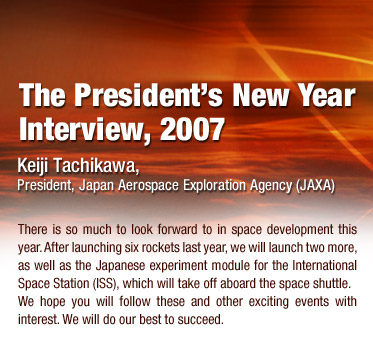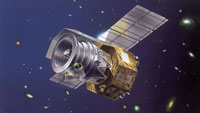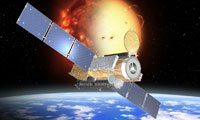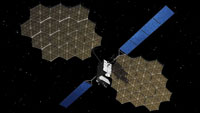 |
Q. Could you tell us what 2006 was like for JAXA?

Infrared Imaging Satellite Akari

Solar Observation Satellite Hinode

Engineering Test Satellite KIKU No.8
I think 2006 was a remarkable year for JAXA, as we successfully launched six H-IIA and M-V rockets. In particular, the four successful H-IIA launches illustrate three significant points. First of all, we proved our continual-launch capabilities, with two rockets taking off in one month, in January-February. Secondly, the lineup of all four H-IIA models is now complete, with the first H-IIA 204-type, powered by four solid-rocket boosters, successfully launched as H-IIA No.11 in December. And finally, for the first time in Japan, we exceeded ten launch vehicles of the same series. Although one of the eleven H-IIA rockets failed, this is still more than a 90-per-cent success rate. Of the M-V rockets, six were successfully launched over the last ten years, with a wonderful finale last year. I think the reliability of Japanese launch vehicles is becoming world class.
In space sciences, the X-ray astronomy satellite Suzaku (ASTRO-EII), the infrared astronomy satellite Akari (ASTRO-F), and the solar observation satellite Hinode (Solar-B) have received great recognition from around the world for the results they have achieved. They demonstrate a focus on some of Japan’s strengths, such as the field of X-ray observation. The instruments aboard these satellites have much higher resolution than previously possible, and we are expecting that more discoveries will be made.
At the end of last year, we also successfully deployed two large antennae of the Engineering Test Satellite VIII (ETS-VIII, also known as KIKU No. 8), launched by H-IIA No. 11. ETS-VIII enables mobile communications using cellular-phone sized terminals. With its capability for prompt information delivery, I think the satellite is going to be of great service to us not only in terms of disaster monitoring but also, for instance, in such locations as mountains or oceans, where there are no switching centers.
While the reliability of Japan’s space program improved last year, it was also great news that ISS construction got back on track. In the summer of 2005, astronaut Soichi Noguchi flew on the Return to Flight space shuttle mission, but the shuttle program was suspended again due to problems that occurred at launch. Although we were concerned about the delay in ISS construction, space shuttle flights finally resumed last year, as did construction. It’s normal for problems to occur in international projects; however, it was quite impressive that the mission resumed after all problems were systematically resolved.
| 1 2 3 4 |